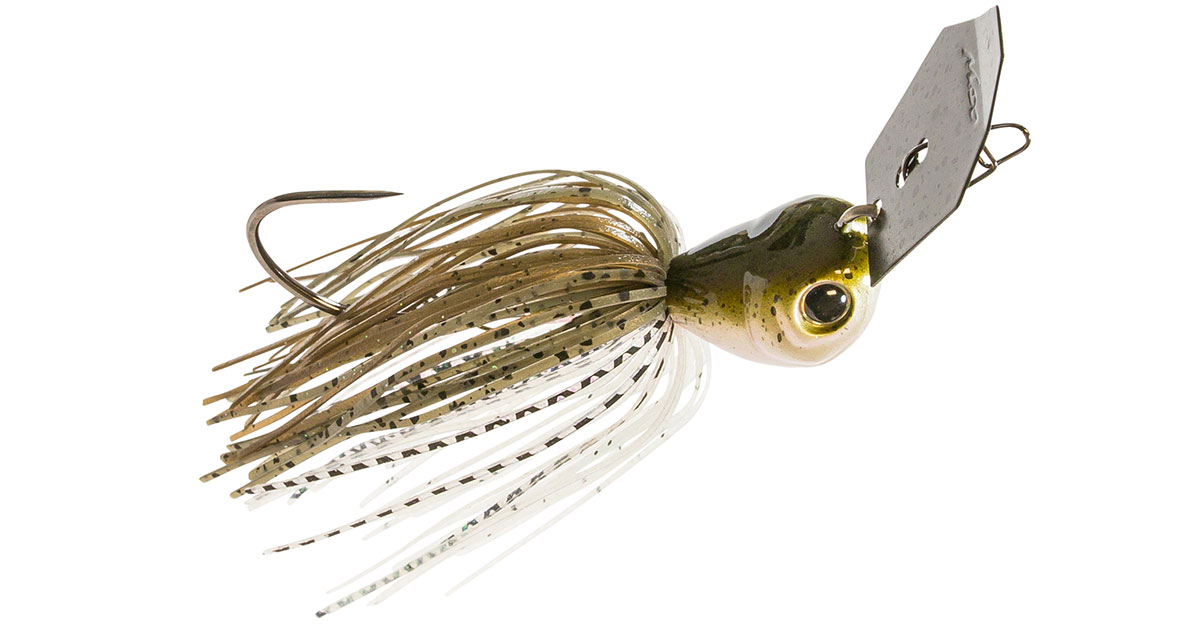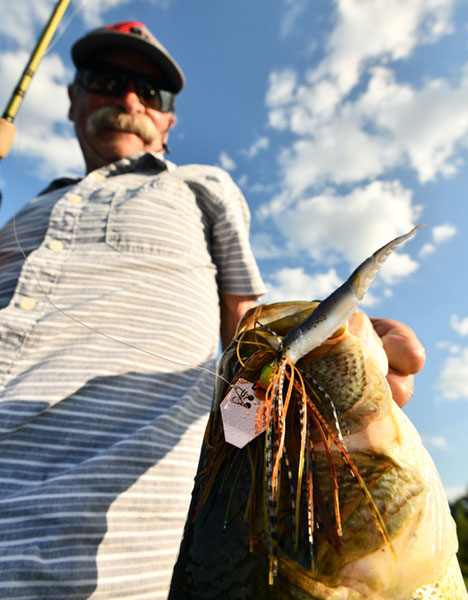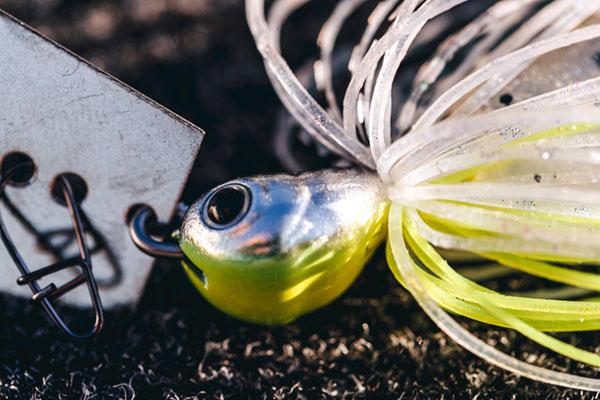Z-man Report
 Z-man Chatterbait
Z-man Chatterbait
In the years since the Original ChatterBait ascended to dominance on the national bass scene, a new lure-category sensation emerged, evolved and snowballed catch rates.
Newer, refined Z-Man bladed jigs offered subtle variations in vibration and unpredictable hunting action, as well as delivering select situational tools, such as the ChatterBait Elite EVO™ and WillowVibe™, which shine both shallow and deep.
Seems like a no-brainer now. But the enchantment of a ChatterBait and its propensity to produce epic outings often depend on the details. A quick change in the cadence. Reading the blade’s musical language. A little tweak in lure or trailer selection, color or jighead weight can bring about radical results. Read on and learn more . . .
(1) Color Coordinate – A common head-scratching bladed jig puzzle, color-coding your chosen ChatterBait with the right soft plastic trailer is usually easier than we make it. Sure, you can run wildly contrasting combos like a pearl-pattern with a chartreuse/red, or a ‘glitter-bomb’ ChatterBait Elite EVO with a fire-craw ChatterSpike for a different look.
Or, to follow the lead of pro anglers who face this riddle every day, you might opt instead to color-match your chosen trailer to the bladed jig itself. For imitating crayfish, give ‘em a double dose of green pumpkin. In stained or tea-colored water, try black and blue all over. In high, dirty water, especially in spring, it’s all fire-craw orange, all the time. Or, for mimicking openwater baitfish, a one-two punch of shad-white to shad-white’s just right. You get the idea. The goal should mostly be to create one cohesive, color-coordinated critter—a continuous lure that impersonates nature rather than a cosplay convention.
(2) Pattern-Matching Trailers – While color coordinating your bladed jig and trailer can be critical, many anglers overlook the role the soft plastic bait plays in altering ChatterBait action and depth. For bottom hugging crawfish patterns, go slow or ‘stop-and-go’ with a double legged creature like the Gremlin™ or GOAT™. To imitate a bluegill in shallow cover, try a subtle, super realistic RaZor ShadZ™.
For probing slightly deeper—and for medium retrieve speeds—rig a slim-profile paddletail. The 4” DieZel MinnowZ™ or Scented PaddlerZ™ pair nicely with a ChatterBait Elite EVO or a JackHammer™.
To kick up the speed or max out a ChatterBait’s random juking movements, dial back tail action to a nervous little wag. A slender ChatterSpike™ or a 4- or 5-inch Scented Jerk ShadZ™ take a backseat to blade action, empowering the lure to perform those evasive, unpredictable moves that incite angry strikes.
PRO TIP: Try ‘vertical rigging’ a Z-Man GOAT, creating a cool scissor kicking double-tail swimbait trailer.
 Chatterbait is a multi-species bait
Chatterbait is a multi-species bait
(3) Multispecies Mods – The ChatterBait’s prowess with big bass is undeniable. And yet, just off the radar, anglers seeking walleye, pike and redfish continue tapping alternative bites, thanks to the power of the blade.
Reserve your abused, naked (skirtless) ChatterBait JackHammers for walleye or pike duty. Add a paddletail swimbait and go to work around cabbage and other toothy critter cover. Or, kick up the visual attraction factor with an Eye Strike® ChatterBait. This eye-catching, naked bladed jig is the perfect vehicle for spicing your favorite redfish or walleye swimbait with flash, wobble and those good vibrations.
PRO TIP: Try probing deeper and slightly slower for walleye or bass with a ChatterBait WillowVibe / Slim SwimZ™ combo. This little ChatterBait offshoot has become a secret weapon among top river smallmouth and walleye guides.
(4) Go Deep – Quietly, select bass anglers are also mining deepwater bass with unconventional ChatterBait techniques. Instead of fishing shallow and horizontal with the crowd, consider grinding deep river channels, bluff banks and boulders. Think big bass. Untapped spots and smallmouths. Grind bottom just fast enough to keep the blade pulsing. Sweep the rod forward. Stop and reel slack as the lure “chatters” on the drop.
The money move for going deep remains a ¾- or 1-1/4-ounce JackHammer, dressed with a craw or creature bait trailer. Heavier bladed jigs hug bottom, traversing deep, rocky terrain, and alerting bass with audible collisions and amped up blade music.
(5) Tackling Up – While no single ChatterBait rod matches every application, pro anglers often favor a 7’1” to 7’4” casting rod for traditional horizontal retrieves. For ripping cover and controlling big fish, Z-Man pros prefer rods with stout spines. The tip section should be moderately fast, just soft enough to read yet absorb blade vibes with ease. Some anglers prefer a glass crankbait rod.
To match a variety of retrieves, consider a casting reel with a 7:1 or even an 8:1 gear ratio. Among pros, consensus is to opt for 30- to 50-pound test fluorocarbon for abrasion resistance, sensitivity and slight stretch.
(6) Cut the Grass – Turn angst with inevitable grass snags into bonus bites. When the lure comes up tight to a plant stalk, give the rod a fast, forceful rip. Not only will this power play immediately clear the lure of leafy debris, the sudden speed burst often coerces nearby bass to take a swing. Pay particular attention to what happens to the lure as it settles, immediately after attaining escape velocity.
(7) Off the Rails – As noted, ChatterBait trailer selection can impact lure depth and action, particularly the ease with which it enters ‘hunt mode.’ Empowered to randomly “go off the rails,” the ChatterBait Elite EVO becomes an evasive, juking machine when you suddenly speed up, slow down or give the rod a fast pop.
PRO TIP: Tournament anglers often use the gears of their high-speed casting reels—rather than rod action— to make the lure cut and dart randomly.
 Rigging your chatterbait
Rigging your chatterbait
(8) Speed Demon – To big bass, there’s something irresistible about a fast-fleeing baitfish. It’s why burning a heavier, streamlined ChatterBait-trailer combo over skinny water can produce electrifying big fish bites. Be sure to rig it with a low-action, low-drag trailer for minimum water resistance and maximum speed. Scream a ½- to ¾-ounce bladed jig alongside a grassline. Shoot the lure past and parallel to boat docks. Don’t be surprised when a supertanker suddenly warps in and grabs the lure right beside your boat.
PRO TIP: If you enjoy arm-jarring eats, try burning a heavy, compact ½-ounce ChatterBait MiniMax with a 3.5” Jerk ShadZ or Finesse ShadZ™ across shallow rock or weed flats—especially sweet for jumbo smallmouths.
(9) Blade & Bite Music – If you’re paying attention, it’s impossible not to detect the musical, melodic vibration of a ChatterBait bladed jig. But “listening” closely to these sounds through your line down to your hands reveals what’s happening down below. When you hit the sweet spot, speed-wise, the blade sings, producing a pleasing rod-strumming cadence. It tells you when a piece of grass clings and comes aboard. And most importantly, when the blade suddenly stops thumping in its usual rapid drumbeat pulse, it nearly always means a bass has crashed the party. Reel down fast and sweep the hook home.
 Z-man Chatterbait
Z-man Chatterbait
BONUS TIP: Auto (Instant) Activation – Anglers who choose a non ChatterBait bladed jig often realize the lure requires them to “activate” the blade—to get it pulsing— usually by popping the rodtip or briefly reeling extra fast. As pro anglers know, bass often sit tight to the bank, or within inches of cover. They’re waiting to ambush an animal. And if your bladed jig isn’t auto-activating and vibrating right out of the gate, if could be a long day.
Conversely, if you’re casting the real deal—a ChatterBait Elite EVO, JackHammer or StealthBlade™—the lure’s blade self-engages. No need for extra tricks or standing on one leg to get the blade to engage.





